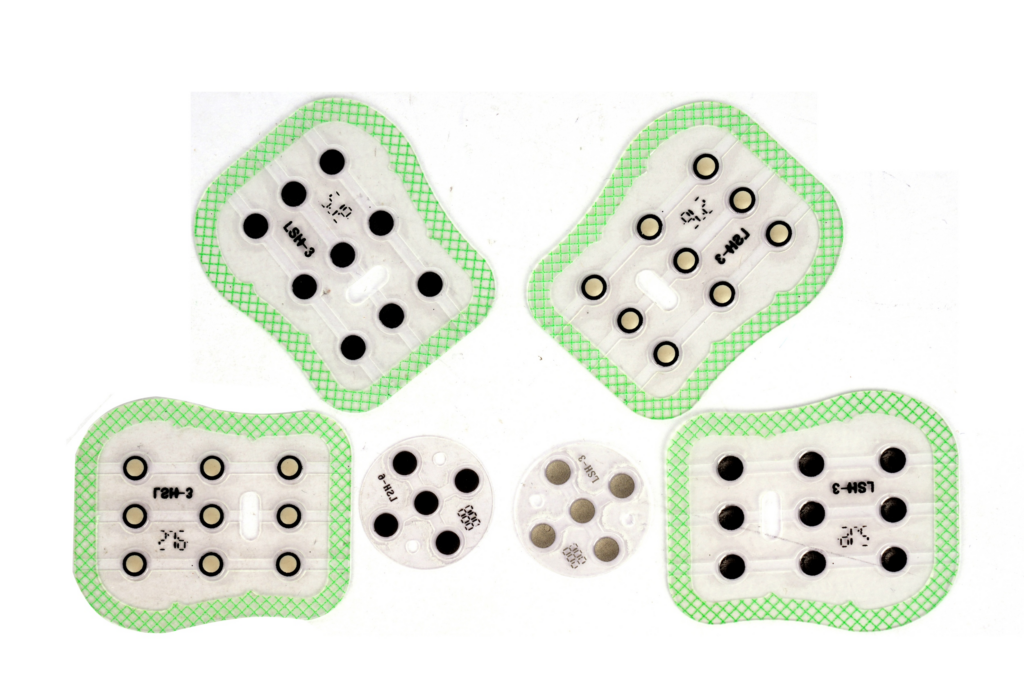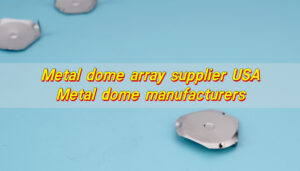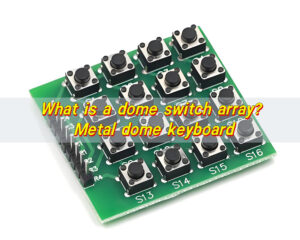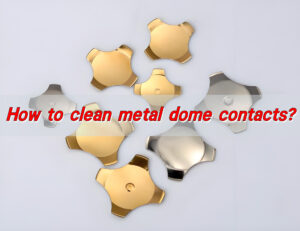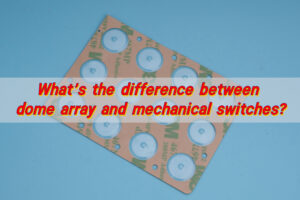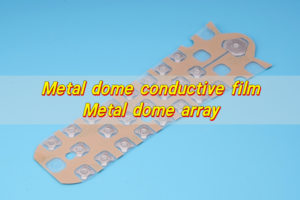In the field of electronic manufacturing, the Top 10 dome array manufacturers in USA have become a key choice for global enterprises’ procurement, thanks to their strict compliance systems, excellent product durability, and efficient customization services. These manufacturers generally hold ISO 9001:2015 certification and RoHS/REACH compliance qualifications, with product service lives mostly reaching over 10 million cycles—meeting the needs of high-end sectors such as medical, automotive, and aerospace. Meanwhile, leading enterprises like Snaptron offer fast customization cycles of 4-6 weeks, significantly improving downstream production efficiency.
Top 10 Dome Array Manufacturers in USA
| Company Name | Process Capabilities | Core Advantages | Location |
| Snaptron | Custom metal dome manufacturing (0.5mm-12mm diameter), multi-layer array design, Peel-and-Place carrier production | 10 million+ cycle service life, 4-6 week customization cycle, medical-grade compliance (ISO 13485) | Loveland, Colorado |
| C&K Components | Film dome arrays, waterproof dome design, hybrid material (metal + silicone) integration | IP67 waterproof rating, automotive certification (IATF 16949), global supply chain support | Newton, Massachusetts |
| E-Switch | Micro dome arrays (minimum 0.3mm diameter), high-frequency signal compatible design | High-frequency application stability (?500MHz without interference), aerospace-grade material (Inconel alloy) | Bloomington, Minnesota |
| APEM Components | Large-size dome arrays (maximum 25mm diameter), backlight-integrated dome design | High load resistance (?5N pressure), backlight uniformity ?90%, rapid prototyping (3 days) | Buffalo, New York |
| NKK Switches | Sealed dome arrays, low-temperature resistant design (-55? to 125?) | Military-grade certification (MIL-STD-883H), chemical corrosion resistance (alcohol/grease proof) | Chino, California |
| Honeywell Sensing | Smart dome arrays (integrated pressure sensor chips), wireless signal transmission modules | Real-time pressure monitoring (accuracy ±2%), IoT connectivity compatibility, industrial-grade reliability | Minneapolis, Minnesota |
| CTS Corporation | Flexible dome arrays (compatible with curved PCBs), ultra-thin design (?0.1mm thickness) | Bending life ?500,000 cycles, ultra-thin structure for small devices, RoHS 2.0 compliance | Elkhart, Indiana |
| Bourns, Inc. | High-voltage resistant dome arrays (?300V AC), anti-static design (ESD ?15kV) | High-voltage application safety certification, anti-static damage, mass production capacity ?1 million units/month | Riverside, California |
| Methode Electronics | Customizable dome arrays (material/size adjusted on demand), medical device-specific design | Medical-grade biocompatibility (ISO 10993), customization cycle ?3 weeks, full-process traceability | Chicago, Illinois |
| ITT Inc. | Extreme-environment dome arrays (-65? to 150?, vibration resistance up to 1000Hz) | Aerospace certification (AS9100D), vibration impact resistance (1000G peak) | White Plains, New York |
What are the main pain points for USA dome array manufacturers?
- Fluctuations in raw material costs: Core metal materials (e.g., 301 stainless steel, beryllium copper) rely on imports. Affected by international commodity prices, cost fluctuations can reach 15%-20%, squeezing profit margins.
- Inadequate capacity for high-end customization: For high-precision domes (tolerance ?±0.01mm) used in medical and aerospace fields, most manufacturers have a monthly capacity of only 5,000-10,000 units, failing to meet large-scale customization needs.
- Shortage of technical talents: The shortage of engineers proficient in precision dome array design (e.g., impedance matching, sealed structures) reaches 30%, prolonging new product R&D cycles by an average of 4-6 weeks.
- Pressure from environmental regulations: State-level environmental regulations such as California Proposition 65 require reduced heavy metal content. Upgrading some traditional processes (e.g., electroplating) requires equipment investment of \(500,000-\)2 million.
- Low profitability of small-batch orders: For small orders of fewer than 1,000 units, production debugging costs account for over 30%. Most manufacturers charge an additional 20%-35% premium for small-batch orders.
- Inefficient supply chain collaboration: Mismatched delivery cycles with upstream material suppliers (e.g., polyester film manufacturers) lead to raw material inventory backlogs, with capital occupancy rates reaching 15%-25%.
How to evaluate a USA dome array maker’s capacity?
- Proportion of automated equipment: Check the percentage of automated production lines (e.g., dome stamping, carrier lamination equipment) among total production lines. Leading manufacturers should have a ratio of ?70% to ensure production capacity stability.
- Quality control system: Verify compliance with industry certifications such as ISO 9001 (basic), ISO 13485 (medical), and IATF 16949 (automotive), as well as the availability of an SPI+AOI+X-Ray three-level inspection process.
- Production capacity flexibility test: Inquire about the “emergency capacity expansion response cycle.” High-quality manufacturers should be able to increase production capacity of a specific product specification by 50% within 7-14 days to cope with order fluctuations.
- Customization technology reserves: Request high-end customization cases from the past 3 years (e.g., ?0.3mm micro domes, IP68 waterproof domes) to evaluate the design team’s ability to address special needs.
- Material traceability capability: Confirm whether raw material batch reports (e.g., metal composition analysis, film temperature resistance test data) can be provided to ensure end-to-end product traceability.
- Fault handling efficiency: Understand the “response time for mass quality issues.” Compliant manufacturers should initiate investigations within 24 hours and provide solutions within 72 hours.
How to assess delivery speed of USA dome array suppliers?
- Standard product delivery cycle: Confirm the delivery cycle for standard-specification dome arrays (e.g., 1-5mm diameter metal domes). The industry’s high-quality standard is 7-10 working days.
- Production scheduling transparency for custom orders: Inquire about the availability of a real-time production scheduling tracking system to view order progress across “design-production-inspection-logistics” stages and avoid information black boxes.
- Emergency order response capability: Test the ability to handle “72-hour rush orders,” including rush fees (reasonable range: 1.2-1.5 times the regular price) and delivery qualification rate (should be ?99.5%).
- Supply chain backup plan: Understand the number of backup suppliers for key raw materials (e.g., special metals, waterproof films). High-quality manufacturers should have at least 2-3 alternatives to avoid supply disruptions from a single supplier.
- Stability of logistics cooperation: Confirm long-term cooperation agreements with international logistics providers such as FedEx and UPS to ensure logistics timeliness fluctuations of ?±1 working day.
- Delay compensation clauses: Check for clear delay compensation terms in contracts (e.g., 0.5%-1% of the order amount compensated per delayed day) to protect the buyer’s rights.
What challenges does the USA dome array industry face?
- Influence of international trade policies: U.S. tariff policies on some raw material exporting countries (e.g., tariffs on metal processed parts) increase raw material costs by 8%-12%.
- Threat of substitution by emerging technologies: The rise of 3D-printed dome array technologies (e.g., nano-scale metal printing) impacts traditional stamping processes, with substitution cases already appearing in low-end markets.
- Tightening environmental regulations: Federal-level restrictions on volatile organic compound (VOCs) emissions are gradually tightening. Traditional electroplating and spraying processes require more environmental protection equipment, increasing production costs.
- Competition from international manufacturers: Asian manufacturers (e.g., China, South Korea) occupy mid-to-low-end markets with cost advantages (20%-30% lower prices). U.S. manufacturers must rely on high-end sectors to maintain competitiveness.
- Downstream demand fluctuations: Cyclical fluctuations in downstream industries such as automotive and consumer electronics (e.g., reduced automotive production due to chip shortages) lead to 30%-40% fluctuations in dome array order volumes.
- Pressure of R&D investment: To adapt to the miniaturization needs of 5G and IoT devices, manufacturers must continuously invest in R&D (annual R&D expenditure should account for ?5% of revenue), otherwise facing the risk of technological obsolescence.
How to choose the best dome array manufacturer in the USA?
- Precise demand matching: Choose manufacturers with corresponding certifications based on your industry (e.g., ISO 13485 for medical, IATF 16949 for automotive) and avoid “one-size-fits-all” suppliers that lack specialization.
- Priority to on-site inspections: When conditions permit, conduct on-site inspections of manufacturers’ production workshops, focusing on the operation status of automated equipment and quality control laboratory configurations to visually assess production capabilities.
- Sign flexible cooperation agreements: Clearly define “production capacity flexibility clauses” (e.g., 30% capacity increase during peak seasons) and “price adjustment mechanisms” (negotiable price adjustments when raw material fluctuations exceed 10%) in contracts to cope with market changes.
- Establish long-term cooperative relationships: For core suppliers (e.g., annual procurement volume exceeding $1 million), sign 1-2 year long-term agreements to secure better prices (5%-10% discounts) and priority production scheduling rights.
- Risk hedging layout: Avoid over-reliance on U.S. manufacturers. Supplement with 1-2 high-quality manufacturers from other regions (e.g., Europe, Asia) to form geographical complementarity in the supply chain and reduce regional risks.
- Technological collaborative innovation: Select manufacturers with R&D capabilities to jointly participate in dome array design for new products (e.g., joint optimization of size and materials) and enhance the competitiveness of end products.



